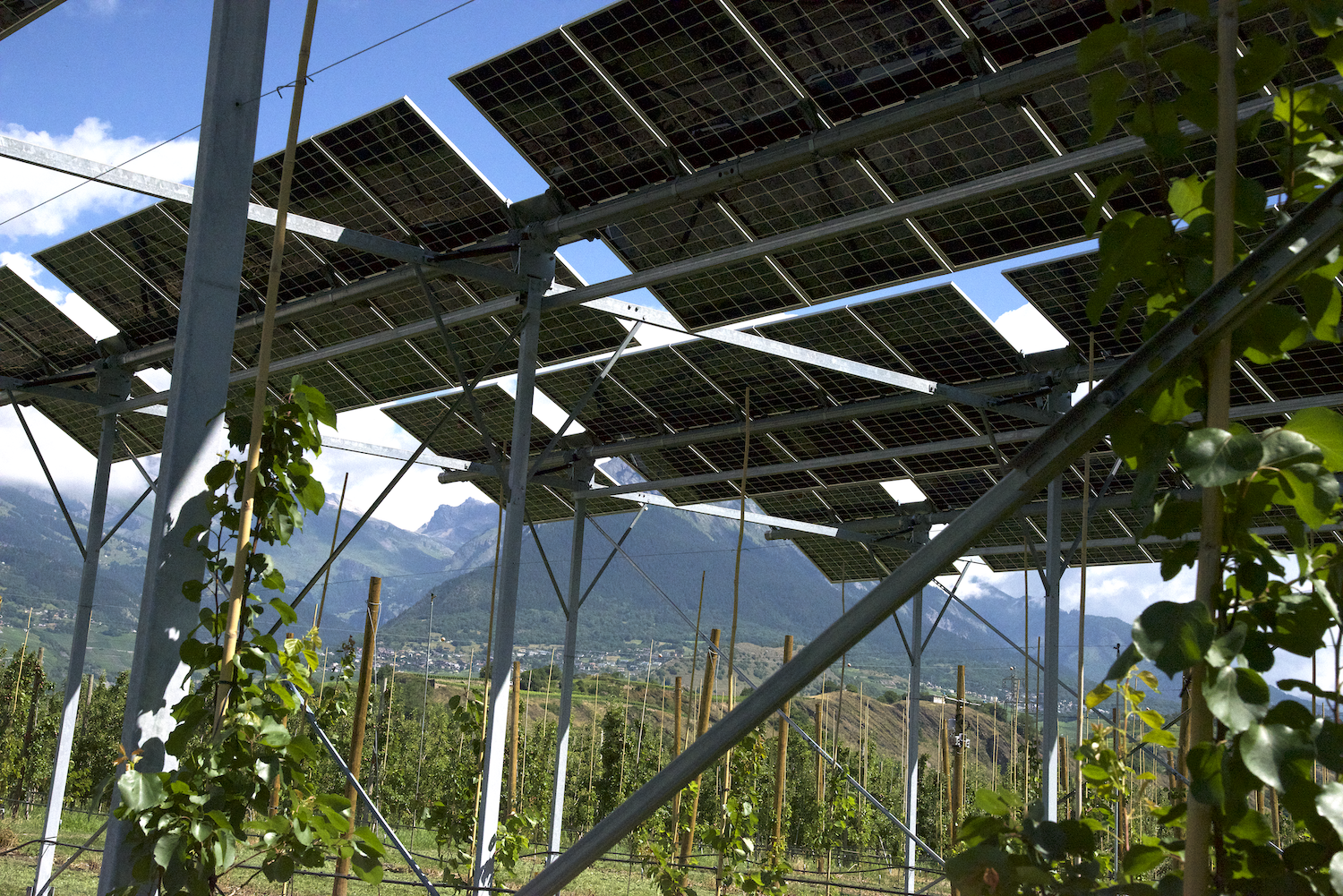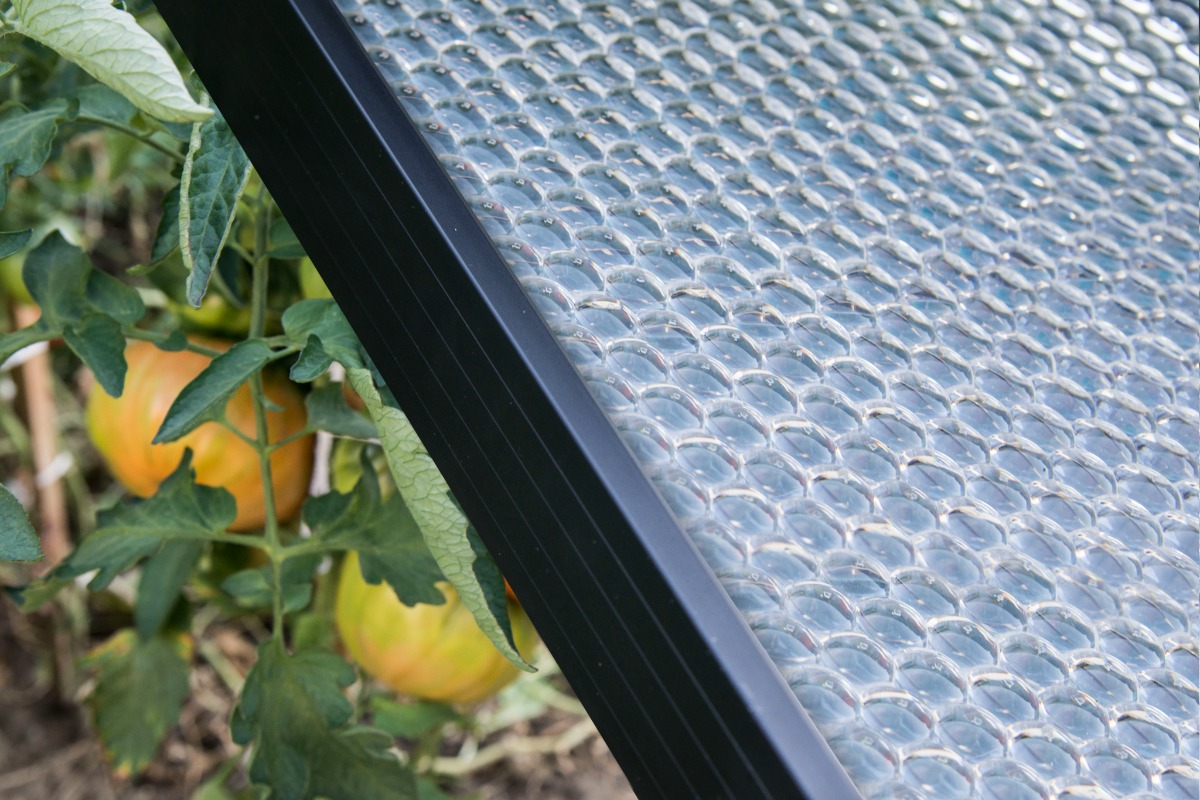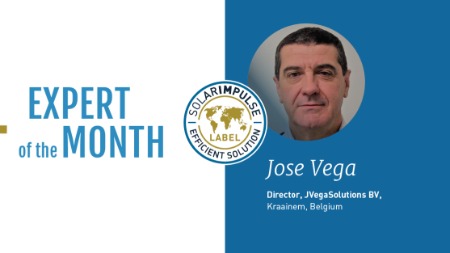1000 Solutions - September 16, 2025
Solution Deep-Dive: Insolight


Written by Hugo Kermiche & Léon Pieyre 3 min read
Interview with Laurent Coulot, CEO & Co-Founder of Insolight
2 years ago, our team visited Insolight’s pilot project in Conthey, Switzerland. Insolight developed the Insolagrin solution; solar panels integrated into agricultural productions where they generate electricity while providing optimal growing conditions for crops.
We talked with Laurent Coulot, CEO & Co-Founder of Insolight, about his company’s recent progress – and how he plans to steer its continued growth.
(pending video upload)
Insolight’s Mission
Based in Renens, Switzerland, Insolight’s team of 25 employees develops a range of agrivoltaic systems tailored to the specific needs of agriculture.
The company specialises in designing solar panels that not only generate significant energy but are also tailored to the specific needs of the crops they cover. Each panel is engineered with a level of transparency that aligns with the light requirements of the plants beneath.
Installed carefully to avoid interfering with agricultural machinery, the systems include integrated sensors that continuously monitor climate and light conditions, enabling automatic or manual adjustment of panel angles to optimize plant growth and productivity.
The implementations are tested at Agroscope, the Swiss Federal Agronomy Centre in Conthey, Switzerland. Having multiple installations at the same spot enables Insolight to compare agronomical, economical and energetic performances depending on the orientation or type of the panels. In doing so, Insolight can further ensure that the technology is used efficiently.
How Challenges Shaped the Insolagrin Solution
Insolight and its Insolagrin solution have evolved and differed from what they were originally meant to be. The first solar panels they designed aimed for high efficiency (over 35%). However, industrialising these panels proved to be too costly.
Early feedback from potential clients guided them towards agrivoltaism; the industry was not particularly interested in the energy efficiency but rather in the technology’s potential to control the lighting and influence the microclimate around it. With time, the Insolight team adapted their panels to answer the demands of the agrivoltaism market
 The installation at Agroscope
The installation at Agroscope
Insolight’s Growth Since Our 2022 Visit: A Pioneer in Agrivoltaism
When we last met the Insolight team in 2022, their solution was still in the pilot stage. Co-founder L. Coulot described that year as a pivotal moment for the start-up, marking the shift toward planning large-scale projects spanning thousands of square meters with farmers. Since then, these larger agrivoltaic installations have become a reality – growing from a single site to over a dozen today.
The video we made back thenInsolight has established itself as a pioneer in agrivoltaism, a concept that was barely on the radar when they launched their project in 2018. Back then, the regulatory landscape was still taking shape. Just a few years later, agrivoltaism gained national visibility when French President Emmanuel Macron addressed it during his election debate – signaling growing momentum for the sector.
In this journey, early partnerships and recognition played a key role. Laurent Coulot points to the collaboration with the Solar Impulse Foundation as particularly meaningful during Insolight’s initial phase, helping the company gain credibility and visibility among investors. The Foundation’s deep ties to both public and private stakeholders enabled Insolight to come in contact with potential clients and investors.
For L. Coulot, agrivoltaism represents a rising field, increasingly relevant as efficient land use becomes central to sustainable resource development.
A Vast Development Scope – and What’s Next for Insolight
With agriculture covering vast areas, Insolight’s solution has the potential to be deployed across a wide variety of crops. The technology is particularly well suited for vegetation that benefits from shade or protection against extreme weather events such as heavy rain or hail. According to CEO Laurent Coulot, the exploitable surface exceeds one million hectares in Europe alone– representing a theoretical energy potential of around one million terawatt-hours.
From a hand-sized prototype to installations spanning thousands of square kilometers, Insolight’s progress has been remarkable. The company now aims to multiply the number of large-scale projects and expand their scope even further. Looking ahead, Coulot envisions Insolight reaching a production capacity of one gigawatt in the late 2030s – equivalent to the output of a small nuclear power plant.

Written by Hugo Kermiche & Léon Pieyre on September 16, 2025




